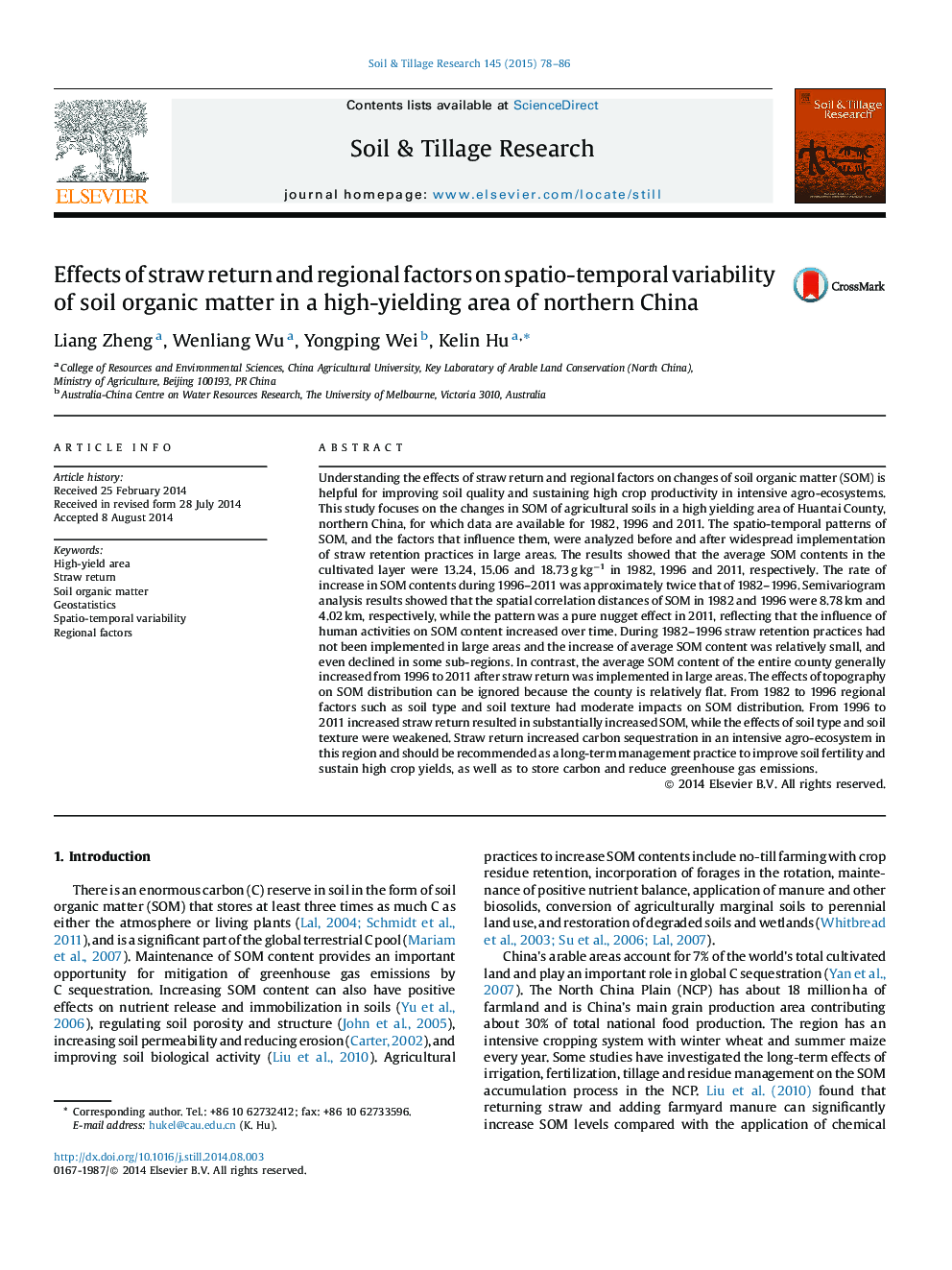| کد مقاله | کد نشریه | سال انتشار | مقاله انگلیسی | نسخه تمام متن |
|---|---|---|---|---|
| 305641 | 513042 | 2015 | 9 صفحه PDF | دانلود رایگان |
• The average SOM contents in arable land increased over time in the study region.
• Spatial correlation distances of SOM decreased over time due to human activities.
• Straw return can effectively increase C sequestration and improve SOM level.
• The effects of soil type and soil texture on SOM were weakened after straw retention.
• Straw retention practices should be adopted as the long-term management practice.
Understanding the effects of straw return and regional factors on changes of soil organic matter (SOM) is helpful for improving soil quality and sustaining high crop productivity in intensive agro-ecosystems. This study focuses on the changes in SOM of agricultural soils in a high yielding area of Huantai County, northern China, for which data are available for 1982, 1996 and 2011. The spatio-temporal patterns of SOM, and the factors that influence them, were analyzed before and after widespread implementation of straw retention practices in large areas. The results showed that the average SOM contents in the cultivated layer were 13.24, 15.06 and 18.73 g kg−1 in 1982, 1996 and 2011, respectively. The rate of increase in SOM contents during 1996–2011 was approximately twice that of 1982–1996. Semivariogram analysis results showed that the spatial correlation distances of SOM in 1982 and 1996 were 8.78 km and 4.02 km, respectively, while the pattern was a pure nugget effect in 2011, reflecting that the influence of human activities on SOM content increased over time. During 1982–1996 straw retention practices had not been implemented in large areas and the increase of average SOM content was relatively small, and even declined in some sub-regions. In contrast, the average SOM content of the entire county generally increased from 1996 to 2011 after straw return was implemented in large areas. The effects of topography on SOM distribution can be ignored because the county is relatively flat. From 1982 to 1996 regional factors such as soil type and soil texture had moderate impacts on SOM distribution. From 1996 to 2011 increased straw return resulted in substantially increased SOM, while the effects of soil type and soil texture were weakened. Straw return increased carbon sequestration in an intensive agro-ecosystem in this region and should be recommended as a long-term management practice to improve soil fertility and sustain high crop yields, as well as to store carbon and reduce greenhouse gas emissions.
Journal: Soil and Tillage Research - Volume 145, January 2015, Pages 78–86
